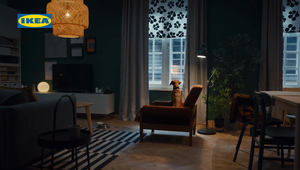
How Louis Vuitton First Went Astray, Then Got Back on Track and Why Brands Should Explore Culture?

Some time ago, the world was abuzz with the news that Louis Vuitton I (actually the luxury holding company LVMH, or Louis Vuitton Moet Hennesy) had bought out a majority stake in the Off-White brand, owned by Virgil Abloh. He was the creative director of the men’s line of the French fashion house, he was also responsible for the development of the alcohol and HORECA category in the holding’s portfolio. Based on reaction on the stock market, this is another good decision by the brand, which closed the first quarter of 2021 with a 30% increase compared to 2020 and thus freed itself from the grip of the global recession. That means that LVMH – and especially Louis Vuitton – is back on track, although just a few years ago there was no indication of this. Bold business moves have contributed to this, including changing the core target group. It is to the analysis of these moves that the following article will be devoted.
Ordinary Brand
In 2015, through a number of articles published in the popular media, we could learn that “Louis Vuitton has become too ordinary”. This meant, more or less, that in those days “everyone could afford it”. This opinion was provided by anonymous respondent during an interview with Shaun Rein, managing director of China Market Research. Why is this so important? Because for luxury brands, China is the most important. The brand’s position was certainly not helped by the words of Ewan Rambourg – managing director at HSBC and author of The Bling Dynasty: Why the Reign of Chinese Luxury Shoppers Has Only Just Begun – who said that the typical Chinese consumer may see the Louis Vuitton brand as suitable for middle class, lacking uniqueness.
Paradoxically, problems for the fashion house were also caused by the overexposure of the iconic monogram. As one of the most counterfeited marks in the world, the Louis Vuitton logo has appeared literally everywhere, and that never works in favour of a luxury brand – or one that wants to be considered as such. Why? To put it simply: because it makes it less luxurious. If you can often see products with the Louis Vuitton logo on the street, it means that everyone can afford them, which means that the brand itself can at most fight for a position on the “premium” shelf, also accessible to the middle class.
Rebirth
The string of failures continued until January 2017. That’s when Kim Jones – Louis Vuitton’s creative director at the time – announced to the world that the giant was launching a partnership with Supreme, the popular streetwear brand. The news initially electrified fans of both brands – not necessarily in a positive sense. You could say that a kind of mésalliance has taken place. How come: a luxury fashion house from France has to “make” clothes with a streetwear brand?! How come: a brand with street, skateboarding origins is associated with a 'bourgeoisie', that has little in common with urban culture! In hindsight, this decision proved salutary for Louis Vuitton, which cannot be said for Supreme, but that’s for another time. There is also reason to believe that it was the French fashion house that courted the other brand – and not the other way around. This may be evidenced by the fact that the history of this relationship began in 2007 with a lawsuit for unlawful use of the Louis Vuitton trademark by Supreme and its commercial exploitation.
But let’s get back to the collection itself. Its launch took place on 30 June 2017, and the products could be purchased in several “throws”. It included both clothing and luxury leather accessories, as well as trunks and bags characteristic of the French giant.
It was dominated by two elements – the red characteristics of Supreme and probably the world’s most famous monogram belonging to Louis Vuitton. Interestingly, this was the exact same monogram that Supreme was once sued for using. The collection was a great success, as can be seen by the prices achieved by the products – even second-hand ones – on the secondary market. More importantly, Louis Vuitton reached younger consumers – people under 30 in love with the streetwear brand Supreme, which at that time was not only a trendsetter but also a symbol of urban culture. Thus, the fashion house ceased to be associated with stagnation and tackiness.
In a way, this venture also opened a new chapter in the history of fashion. Today, no one is surprised by the fact that streetwear brands cooperate with the high street fashion sector – the joint collection of Dior and Nike, or adidas and Prada are well known.
Off White
This was just the beginning of the brand’s success. The position of creative director of Louis Vuitton men’s line has been taken over by Virgil Abloh, creator of brands such as Pyrex Vision or the Been Trill artistic group, which also included superstars such as Heron Preston, Matthew Williams, Kanye West or Justin Saunders, better known in the fashion world as JJJJound. Virgil was one of the few Americans to get the chance to be the artistic director of a European fashion house, and one of the few black people in that position in the history of the industry.
The very first show proved Virgil’s revolutionary approach to the Louis Vuitton brand. Products became more limited and buying them became a much more unique experience. All this has influenced the perception of the brand as more exclusive.
Conclusion
The achievements of Kim Jones and Virgil Abloh are undeniable, but I believe that the success of the brand and its return to the top is not down to creative directors. The most important role was played by the reference to culture, thanks to which the brand was noticed by a younger audience. Not just by using the right touchpoints or speaking their language, but by understanding and making good use of prevailing trends. At the time, streetwear was part of them – and this has not changed to this day. It is the street – not the French catwalks – that decide what you wear.
This is also perfectly illustrated by the example of Balenciaga, which was reborn based on the popularity of normcore and daddy shoes. Its latest show focused on the reality of deep fakes and fake news increasingly present in our lives. Meanwhile, just a few years ago the brand had a similar problem – according to many people, it was embedded in the past. Georgian designer Demna Cvasalia helped it then. Why did he turn out to be a saviour? Because he had a good sense of culture and trends, which he proved in his work for Vetements, a brand that became famous for collaborating with DHL and selling courier shirts for $1,000. He also perfectly understood the trends of ugly shoes and daddy shoes. Thanks in part to this designer, Balenciaga released the Triple S model, which was hailed as the ugliest shoes ever. However, this did not stop sales – which continue to this day – and the introduction of new shoe colours.
In retrospect, we can see that measures such as establishing a partnership with Supreme – and thus reaching out to a younger audience – have paid off. After all, according to the Forbes magazine, millennials already accounted for 32% of luxury goods buyers in 2019, and this is expected to be 50% by 2025. Even if we assume that this dynamic will be gently slowed down by the pandemic (or perhaps accelerated?), it does not change the fact that brands – especially those with a rich heritage – need to adapt their communication to today’s times and to younger customers. Political and social issues also arise in this context. Brands exist in people’s minds, not in a vacuum. Those who fail to understand this in time are likely to quietly disappear from the market.
Cover photo by via unsplash.com













